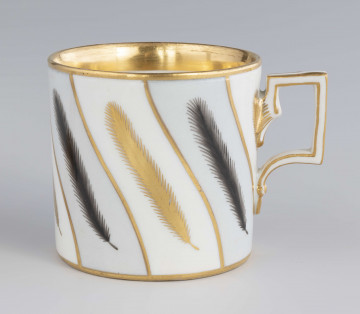
Creamer jug
1825 — 1835
National Museum in Lublin
Part of the collection: European porcelain
The porcelain manufactory in Vienna was founded in 1718 as the second in Europe, after Meissen. It was founded by Claudius Innocentius Du Paquier, a supplier to the court, and ran with varying degrees of success until 1744. Due to financial difficulties, he sold the factory to Empress Maria Theresa, and from then on the porcelain manufactory operated in Vienna under state patronage until 1864. Its development peaked between 1784 and 1805 when Baron Konrad Sörgel von Sorgenthal was the director. He carried out a thorough reorganisation of the factory, established a school of painting, applied an effective incentive system, rewarded outstanding designers, and took care of pensioners and the widows of employees. The style of the products of that time was classical: antique ornaments (meander, floral thread with acanthus leaves, palmettes, horns of plenty, mascarons), figures in antique clothes, mythological scenes, etc. Thanks to the inventions and discoveries of the arcanist Joseph Leithner, the workshop had a rich colour palette, the most famous being a dark, shiny cobalt blue, called Leithner blue. It was used as a background for ornaments in gold relief and brought the factory fame all over Europe. Dishes decorated in this way were the most luxurious and the most expensive part of the production.
Barbara Czajkowska
Author / creator
Dimensions
cały obiekt: diameter: 13,5 cm
Object type
dish
Technique
overglaze paints
Material
porcelain
Creation time / dating
Creation / finding place
Owner
The National Museum in Lublin
Identification number
Location / status

1825 — 1835
National Museum in Lublin

1807
National Museum in Lublin

1807
National Museum in Lublin
DISCOVER this TOPIC
Museum of King Jan III's Palace at Wilanów
DISCOVER this PATH
Educational path